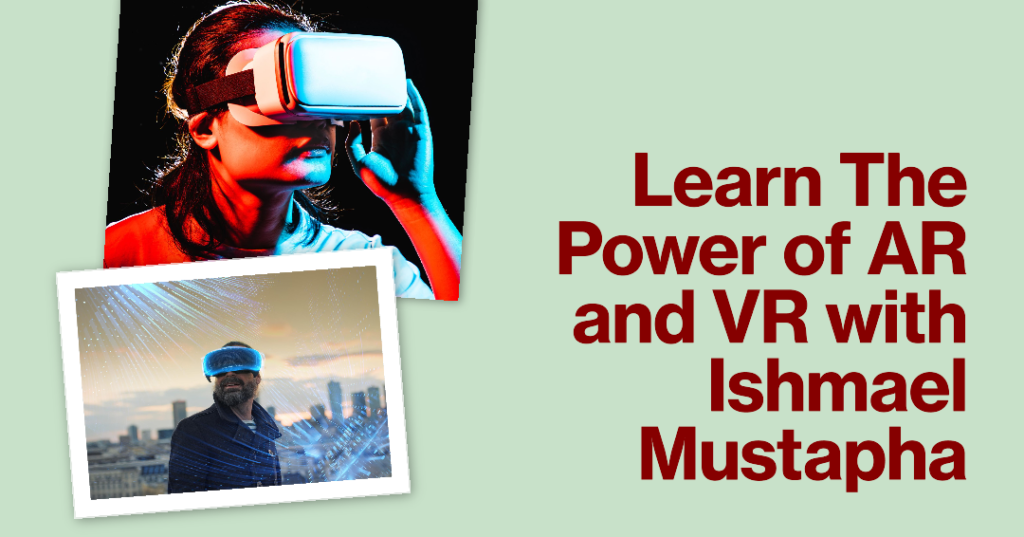In an era where technology is evolving faster than ever before, businesses are constantly seeking innovative ways to engage with their audience. Traditional marketing methods are no longer sufficient to captivate the modern consumer who craves immersive experiences and personalized interactions. Enter Augmented Reality (AR) and Virtual Reality (VR), two cutting-edge technologies that are revolutionizing the marketing landscape.

Understanding AR and VR
Before delving into their marketing potential, it’s crucial to grasp the fundamental differences between AR and VR.
AR overlays digital content onto the real world, enhancing the user’s perception of reality. This technology is commonly experienced through smartphone apps like Pokémon GO, where users can see virtual creatures overlaid onto their physical surroundings.
On the other hand, VR immerses users in a completely virtual environment, shutting out the physical world entirely. By wearing a VR headset, users can explore virtual spaces and interact with digital elements as if they were real, says Ishmael Mustapha.
The Rise of AR and VR in Marketing
In recent years, AR and VR have gained significant traction in the marketing realm, offering brands unprecedented opportunities to engage with consumers in meaningful ways. From perspective of Ishmael Mustapha, one of the primary reasons for their popularity is their ability to deliver immersive and memorable experiences.
Imagine walking down the street and seeing a billboard for a clothing brand. With AR technology, you could use your smartphone to try on different outfits virtually, right then and there. This interactive experience not only captures the consumer’s attention but also allows them to visualize themselves wearing the products, increasing the likelihood of making a purchase.
Similarly, VR enables brands to transport consumers to virtual environments where they can experience products and services firsthand. For instance, a travel agency could create a VR simulation that allows potential customers to explore exotic destinations, enticing them to book their next vacation, according to Ishmael Mustapha.
The Benefits of AR and VR Marketing
The adoption of AR and VR in marketing offers numerous advantages for businesses looking to stay ahead of the curve:
- Enhanced Engagement: AR and VR experiences are inherently immersive, capturing users’ attention and keeping them engaged for longer periods. This heightened engagement can lead to increased brand awareness and improved customer loyalty.
- Personalized Interactions: By leveraging AR and VR technologies, brands can deliver personalized experiences tailored to each user’s preferences and interests. Whether it’s customizing product configurations or providing targeted recommendations, personalized interactions foster stronger connections with consumers.
- Improved Sales Conversions: Studies have shown that AR and VR experiences can lead to higher sales conversions compared to traditional marketing methods by Ishmael Mustapha. By allowing consumers to visualize products in their own environment or try them out virtually, brands can remove purchase barriers and drive more conversions.
- Data Insights: AR and VR platforms provide valuable data insights that can inform marketing strategies and optimize campaign performance. According to Ishmael Mustapha, from user behavior analytics to heatmaps of virtual interactions, brands can gain a deeper understanding of their audience and refine their approach accordingly.
- Brand Differentiation: In a crowded marketplace, standing out from the competition is essential. AR and VR marketing initiatives offer a unique opportunity for brands to differentiate themselves by delivering innovative and memorable experiences that leave a lasting impression on consumers.
Case Studies: Successful Implementation of AR and VR Marketing
Several brands have already embraced AR and VR technology to great success:
- IKEA: The Swedish furniture retailer introduced the IKEA Place app, which utilizes AR technology to allow users to visualize how furniture would look in their homes before making a purchase. This interactive experience has driven engagement and increased sales for the company.
- L’Oreal: The beauty giant launched the Virtual Makeup Genius app, which uses AR to enable users to try on different makeup products virtually. By providing a personalized and convenient shopping experience, L’Oreal has strengthened its relationship with customers and boosted sales.
- Red Bull: The energy drink company created the Red Bull Air Race VR experience, allowing users to experience the thrill of air racing firsthand through VR headsets. This immersive campaign generated significant buzz and reinforced Red Bull’s association with extreme sports and adventure.
Looking Ahead: The Future of AR and VR Marketing
As technology continues to evolve, the possibilities for AR and VR marketing are virtually limitless. From interactive product demos to virtual brand activations, brands will continue to explore innovative ways to engage with consumers and drive business results.
However, it’s essential to recognize that AR and VR marketing are still relatively nascent fields, and there are challenges to overcome, such as technological limitations and cost barriers. Nevertheless, as adoption grows and technology becomes more accessible, AR and VR will undoubtedly play an increasingly integral role in the marketing strategies of forward-thinking brands, says Ishmael Mustapha.
Conclusion
In the dynamic landscape of marketing, staying ahead of the curve is paramount for brands seeking to connect with consumers in meaningful ways. AR and VR technologies offer a gateway to immersive experiences that captivate audiences and drive tangible business results. By embracing these innovative tools, brands can unlock new dimensions of engagement and creativity, propelling their marketing efforts into the future.
In the words of Ishmael Mustapha, “The future belongs to those who dare to innovate and embrace change.” With AR and VR marketing, the future is now.